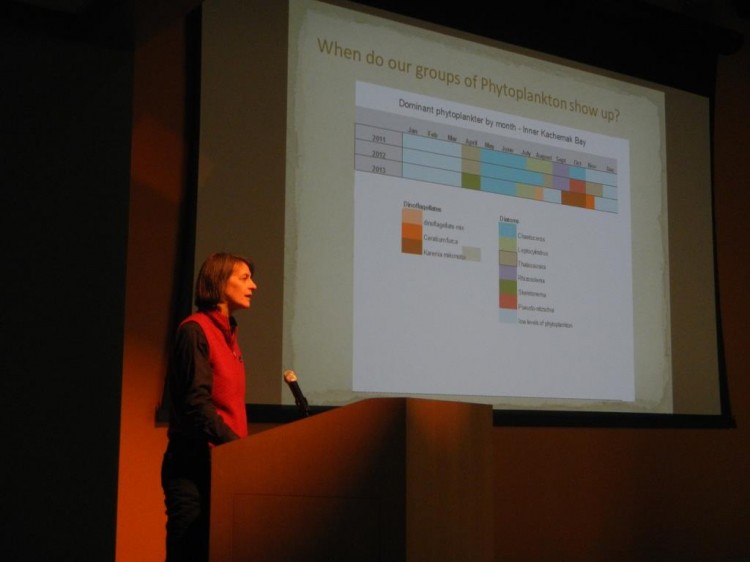Harmful algal blooms, particularly those that cause paralytic shellfish poisoning, pose a threat to human health, food security, and the economy of local communities in Alaska. There is a need for greater understanding of these blooms by community members and for the development of an effective and integrated monitoring system. To meet these needs, NCCOS scientists collaborated with the Kachemak Bay National Estuarine Research Reserve (KBNERR) and the Alaska Ocean Observing System to sponsor the Kachemak Bay Phytoplankton and Harmful Algal Bloom Conference held on February 19 -20, 2014 in Homer, Alaska.

The two-day meeting allowed for focused talks and group discussions to develop specific actions to improve future harmful algal bloom monitoring and response efforts. At the request of the KBNERR and other local stakeholders, NCCOS scientists provided: (1) an overview of the plankton community dynamics that may influence coastal food webs in Alaska and the intensity of harmful algal blooms; (2) an overview of the molecular methods being used to identify the environmental factors that foster blooms of the toxic microalgae that causes paralytic shellfish poisoning; and (3) results of intensive plankton and oceanographic monitoring conducted in Kachemak Bay over the past two years.
Group discussions led to the identification of short- and long-term goals, including: (1) developing an improved centralized database for phytoplankton monitoring data; (2) developing an improved plankton identification manual; (3) improving information sharing among researchers, resource managers, and public health officials; and (4) improving event response capabilities and coordination with the Alaska Department of Health and Social Services.
Stakeholders participating in the conference included the Alaska Department of Environmental Conservation, the Alaska Department of Fish and Game, Alaska Sea Grant, oyster farmers, tribal environmental coordinators, local village representatives, volunteer citizen monitors, industrial partners, federal agencies, and local colleges and collaborating universities. A local high school team competing in the Alaska regional competition of the National Ocean Science Bowl (Tsunami Bowl) also made a presentation on harmful algal blooms at the meeting.
For more information, contact Patricia.Tester@noaa.gov, Wayne.Litaker@noaa.gov, or Kris.Holderied@noaa.gov.
